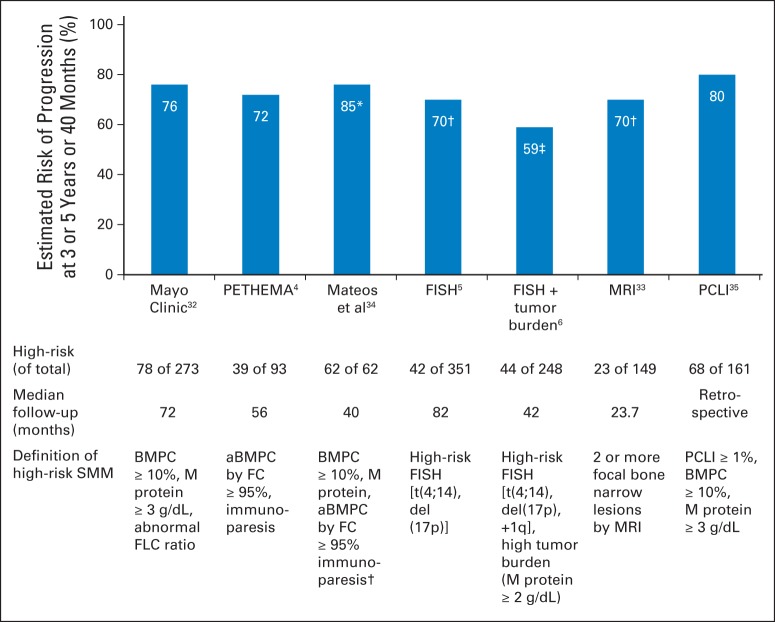Fig 3.
Identification of high-risk smoldering multiple myeloma (SMM) and risk of transformation to multiple myeloma, by published models. (*) Actual rate of progression in an untreated patient with high-risk SMM during the median follow-up of 40 months.34 This study used a hybrid method to defined high-risk SMM that combined Mayo Clinic and Programa de Estudio y Tratamiento de las Hemopatías Malignas (PETHEMA) criteria. The high-risk group was defined as patients with ≥ 10% bone marrow plasma cells and monoclonal component (immunoglobulin G ≥ 3 g/dL, immunoglobulin A ≥ 2 g/dL, or urine Bence Jones protein > 1 gram per 24 hours) or one of these criteria and ≥ 95% abnormal bone marrow plasma cells by flow cytometry (FC) with immunoparesis. (†) Three-year estimated risks of progression. Original article reported median time to progression in individual risk groups; 3-year risks of progression were estimated based on Kaplan-Meier survival curves. (‡) Three-year risk of progression was reported. Bars without symbols (*, †, ‡) are for 5-year risk of progression. aBMPC, abnormal bone marrow plasma cells; BMPC, bone marrow plasma cells; FLC, free light chain; FISH, fluorescent in situ hybridization; MRI, magnetic resonance imaging; PCLI, plasma cell labeling index.

